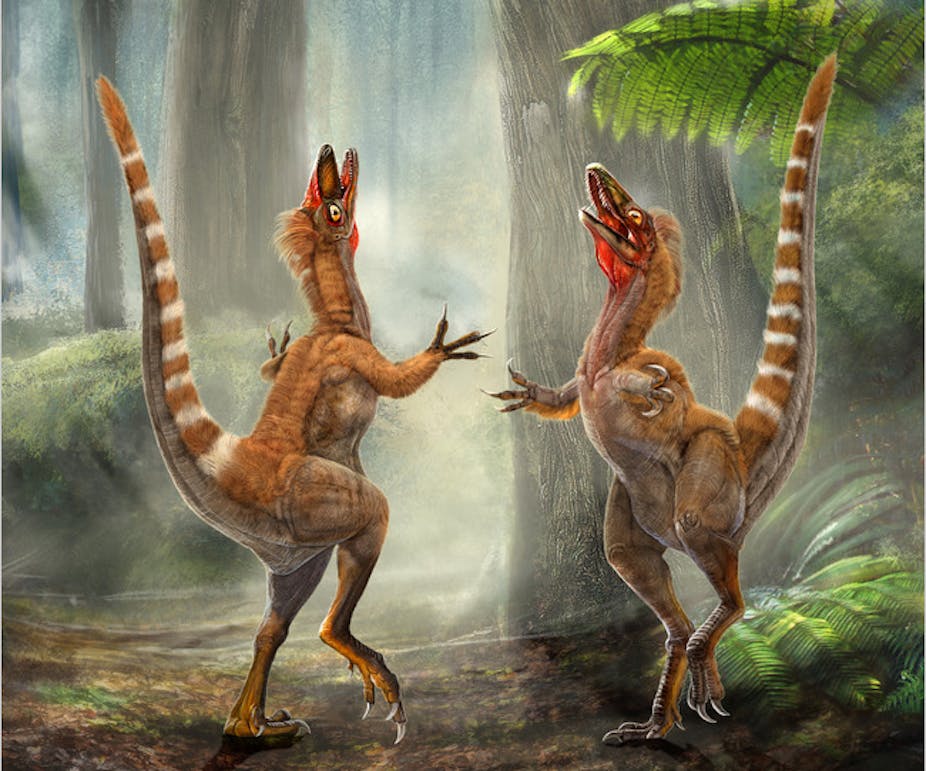A series of fossil discoveries in the 1990s changed our understanding of the lives of early birds and mammals, as well as the dinosaurs they shared an ecosystem with. All those discoveries had one thing in common: they came from a small region in northern China that preserved what is now called the Jehol Biota.
Until now, however, no one knew why so many well-preserved fossils have been found in that region. In a new study published in Nature Communications, researchers have found that this remarkable preservation might have been the result of a Pompeii-like event, where hot ash from a volcanic eruption entombed these animals.
Dino colours
According to Sarah Gabbott at Leicester University, who wasn’t involved in the study, “unravelling the environments in which fossilisation took place, as the authors do in this paper, is very important. It places the fossils within the context of their habitat and it allows us to determine what filters and biases may have played a part.” These biases may affect which organisms get preserved.
The fossils of the Jehol Biota are from the Early Cretaceous period, about 130 million years ago, and they comprise a wide variety of animals and plants. So far, about 60 species of plants, 1000 species of invertebrates, and 140 species of vertebrates have been found in the Jehol Biota.

One of the most remarkable discoveries to arise from these fossils came in 2010, when Michael Benton of the University of Bristol found colour-banding preserved in dinosaur fossils. These stripes of light and dark are similar to stripes in modern birds, and provided further evidence that dinosaurs that evolved into birds. Benton also found that these fossils had intact melanosomes – organelles that make pigments. This discovery allowed paleontologists, for the first time, to tell the colours of dinosaurs’ feathers.
Rising from the ashes
Baoyu Jiang of Nanjing University, the lead researcher of the new study, has been studying fossils from Jehol Biota for more than a decade. “About two years ago, we realised that the sediments and their enclosing skeletons may provide key clues about what happened to these animals when they were killed and buried,” he said.
The fact that so many fossils were found exquisitely preserved from the same time period suggested some form of mass death. Even before Baoyu started this work, there were suggestions that volcanoes may have been responsible.
Using 14 different fossils from five locations within the deposits, Baoyu found marks of fast-moving ash and hot gas, known as pyroclastic flows, that can only result from a nearby volcanic eruption. The bones showed black streaks, which suggests charring had occurred.
Almost Pompeii

But questions remain. The area that supported the Jehol Biota is suspected to have been a wetland with many lakes. Most fossils are found in lakebeds, suggesting that either the fossils were washed into these lakes by floods or that the animals were in the lakes before fossilisation took place.
Baoyu believes that if fossils don’t separate at bone joints, it means the animals must have been in the lake before dying. But that is not a convincing argument, Gabbott said. “A freshly dead carcass, buoyed by decay gases which collect in the stomach, can be transported for tens if not hundreds of kilometres without such disarticulation (separation of bones at joints).”
No other fossil location, let alone that which produced so many well-preserved samples, has ever been suggested to have undergone a similar event. A comparison can be made to what happened in Pompeii in 79 AD, when Mount Vesuvius erupted. The ensuing destruction led to the preservation of the city’s architecture and objects but not of people or animals. The human and animal remains we see from Pompeii are plaster casts of the empty spaces their decomposed bodies left in the ash.
Still, Jehol Biota and Pompeii both show how mass tragedies at the feet of volacanoes can preserve the past for future generations to discover.


